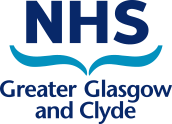Safe Use of Insulin for Adults Admitted to Hospital – Summary of Blog Series
Errors involving insulin can cause serious harm to patients. A series of blogs have been published to help explain the key principles of safe insulin prescribing and administration during inpatient admission and at discharge.
The blogs cover medicines reconciliation, prescribing, administration and discharge.
Key Messages
-
Accurate medicines reconciliation is essential to maintain patient safety
-
Confirm the patient is on insulin, the brand, concentration, device, dose and frequency
-
For safe insulin prescribing, it is essential to know where to prescribe, how to prescribe and what to prescribe
-
ALL insulin must be prescribed by brand on HEPMA and the corresponding paper chart (e.g. Subcutaneous Insulin Prescription and Administration (IPAR), Diabetic Ketoacidosis (DKA) pathway, Hyperosmolar Hyperglycaemic Syndrome (HHS) pathway, Variable Rate Intravenous Insulin Infusion (VRIII))
-
Review insulin charts daily
-
Always prescribe insulin with units written in full. NEVER use “IU” or “U” as an abbreviation for units as this can be misinterpreted as a “one” and/or “zero” and lead to unintentional overdose
Safe Administration of Insulin
-
For safe insulin administration, it is essential to be aware of the correct device to use, how to store the insulin and how to administer (under no circumstances should insulin be withdrawn from a cartridge or pre-filled pen using a needle and insulin syringe)
-
Encourage patients to self-administer where possible under nurse supervision and use their usual insulin device
-
If patients are finding it difficult to self-inject or are newly started on insulin, please refer to the diabetes specialist nurse service for education/review
-
For safe use of insulin on discharge, it is essential to start discharge planning at an early stage particularly if a referral is required to district nurses for ongoing support
-
Clear documentation of insulin regimes at discharge on the Immediate Discharge Letter (IDL) is essential to maintain continuity and safety
-
The correct insulin brand, device and frequency should be specified on the drug entry of the IDL. Specific dosage information should be included in the letter section of the IDL
Useful links and further information
Diabetes, Inpatient Prescribing FAQs for Junior Doctors
Acute Management includes links to management of VRIII, DKA and HHS
Community Diabetes Specialist Nurse Referrals:
Contact your local Acute diabetes specialist nurse (DSN) service for advice on referrals to community DSN service as the process for this varies across NHSGGC Acute sites.
LearnPro:
NES Diabetes Think Check Act
GGC: 280 Capillary Blood Ketone Testing for Prescribers
GGC: 279 Capillary Blood Ketone Testing for Ward and Theatre Nurses
|
Remember: Patients with type 1 diabetes or previous diabetic ketoacidosis (DKA) should always receive their long acting insulin while an inpatient (unless advised by the inpatient diabetes team). Missing any insulin can lead to development of DKA. |
Published 08/02/2023. Updated 26/06/23. Links to guidelines updated 08/09/23. Medicines Update blogs are correct at the time of publication.
If you would like to subscribe to Medicines Update or provide feedback on the blogs, email medicines.update@ggc.scot.nhs.uk.
Follow Medicines Update on Twitter @NHSGGCMeds
